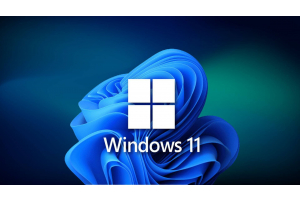Configure Windows Server 2019 File Server
In today's digital age, storage and file management are fundamental for any company or organization. Windows Server 2019 offers a robust and reliable solution for configuring a file server that can meet your company's data storage needs. In this article, we will explore how to set up a file server in Windows Server 2019, taking advantage of the powerful capabilities of this platform.
Why Windows Server 2019?
Windows Server 2019 is one of the most recent and advanced versions of Microsoft's server operating system. It offers numerous advantages in terms of security, performance and functionality for configuring a file server. Some of the key reasons to choose Windows Server 2019 include:
Improved Security. Windows Server 2019 comes with enhanced security features, such as Windows Defender Advanced Threat Protection (ATP), which helps protect your data against cyber threats.
Optimized Performance. This version of the operating system has been designed to offer better performance and efficiency, which makes it an ideal choice for file servers with high resource demands.
Continuous Support. Microsoft provides ongoing support for Windows Server 2019, ensuring that your file server is up-to-date and secure.


Basic Configuration of the File Server
Now, let's dive into setting up a file server in Windows Server 2019. Follow these steps to get started:
Step 1: Installing Windows Server 2019
The first thing you need to do is install Windows Server 2019 on your server hardware. Be sure to follow the installation and configuration best practices recommended by Microsoft.
Step 2: Add the File Server Role
Once you have installed Windows Server 2019, you need to add the file server role. Follow these steps:
Log in to your server with an administrator account.
Open the "Server Manager" from the "Start" menu.
In the Server Manager, click "Manage" and select "Add Roles and Features".
In the Add roles and features wizard, select "File Server" and follow the instructions to complete the installation.
Step 3: Set Up File Sharing
Once the file server role is installed, you can start configuring file shares so that users can access them. Follow these steps:
Open the "Server Manager" and click on "File and Storage services".
Under "File and Storage Services", select "Shares" to view existing file shares or create a new one.
Click on "Task" and select "New Sharing".
Follow the wizard to create a new file sharing, define the folders you want to share, configure permissions and sharing options according to your needs.
Step 4: Set Up Folder Access
After setting up file shares, it is essential to establish who can access them and with what level of permissions. Follow these steps:
Right click on the shared folder you want to configure and select "Properties".
On the "Security" tab, configure the folder access permissions for users or groups that need access.
On the "Sharing" tab, configure the sharing options, such as the name of the share and the specific sharing permissions.
Step 5: Set Up Disk Quotas
To prevent disk space depletion and control storage usage, you can configure disk quotas in Windows Server 2019. Follow these steps:
In the "Server Manager", go to "File and Storage Services" and select "Disk Quotas".
Click on "Task" and select "New Disk quota".
Follow the wizard to configure quota limits and notifications according to your requirements.
Advanced Features
In addition to the basic configuration, Windows Server 2019 offers several advanced features that can improve the management and performance of your file server:
Detection of Duplicate Data. Windows Server 2019 includes a duplicate data detection feature that helps identify and delete duplicate files in your file shares, saving storage space.
Data Encryption. You can use data encryption to protect the files stored on your file server. Windows Server 2019 supports BitLocker drive encryption to protect data at rest.
Audit of Files. File auditing allows you to keep track of who accesses your files and what actions they perform. You can configure audit policies to get detailed information about file activity.


Ongoing Maintenance and Administration
Once your file server is configured and up and running, it is important to perform regular maintenance and ongoing management to ensure optimal performance and data security.
Software updates. Make sure your file server is up to date with the latest security updates and software patches. Keeping the system up to date is essential to protect it against known vulnerabilities.
Backup copies. Make regular backups of the data stored on your file server to protect against data loss. You can use built-in backup tools or third-party solutions for this purpose.
Performance monitoring. Use performance monitoring tools to monitor resource usage on your server and take proactive steps to address potential issues.
You already know how to improve the efficiency of your organization in today's digital world!
We hope this article has provided you with a solid insight on how to set up a file server in Windows Server 2019. By following these steps and taking advantage of the advanced features of this platform, you can establish an efficient and secure data storage environment for your organization.
Remember that the security of your data is a priority, so it is essential to keep your file server up to date with the latest software updates and perform regular backups. File auditing can also help track activity and ensure access requirements are met.
Windows Server 2019 is a powerful tool to manage and protect your business information. As your organization grows and evolves, this platform can scale to meet your ever-changing data warehousing needs.




